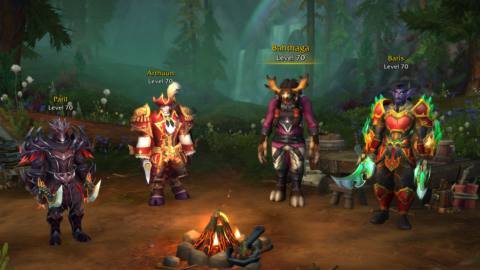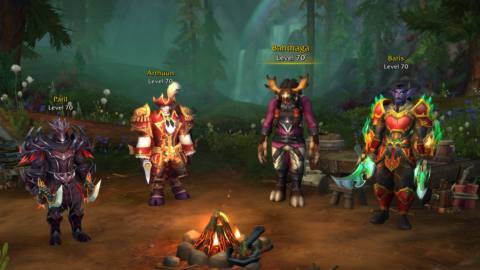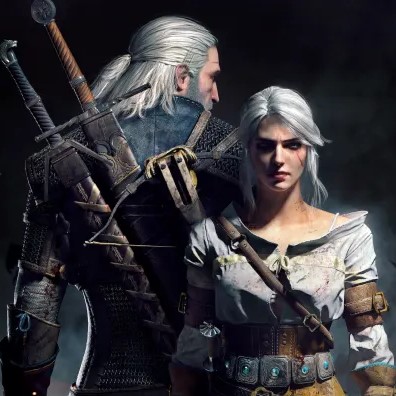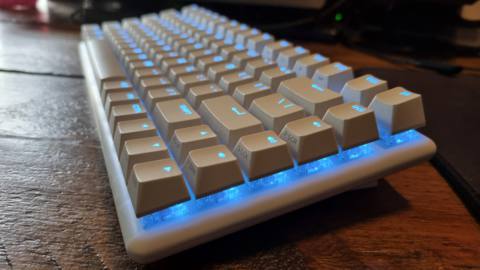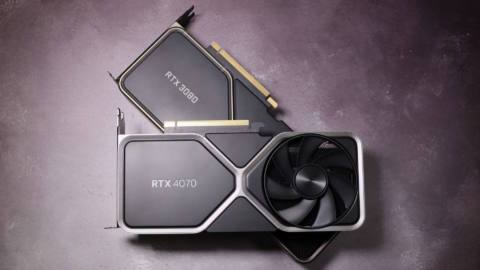Until Doom Eternal came along and engulfed YouTube in the fires of hellish Discourse, Doom 3 was the hotly debated one. Discussed and re-litigated a thousand times over, it was highly praised by many at launch, “a non-stop ride of tension, carnage and terror” (to quote PC Gamer’s 94% scoring review), while others found themselves less enthralled by its goofy action-horror charms. Edge Magazine and the New York Times both considered it a pleasant enough seven-out-of-ten game, with the latter skewering it for its “skeletal story and often repetitive game play”. Criticisms that seem increasingly fair with time.
Does Doom 3 hold up today? That’s a complicated question. Did it hold up at launch is an equally interesting one. Doom 3 was, for many, a visual showcase. A victory lap for PC gaming, featuring graphics that seem quaintly of-an-era now, but were almost (more on that later) the cutting edge at the time. Doom 3’s entire aesthetic was defined by its deep, sharp-edged stencil shadows cast by dynamic light-sources. Steep bump-maps and specular highlights gave its high-tech corridors and hellish brickwork a deliciously tactile look when most game’s walls just looked like flat polygons with detail painted on.
This technology informed the design of the game. When you’ve got an engine perfect for rendering detailed, claustrophobic, dimly lit tunnels, you’ve got the recipe for something spookier than classic Doom. And so Doom 3 was more of a cinematic, survivor horror-tinged adventure, with smaller groups of enemies that loved to get in your face, or lob fireballs from impenetrably deep shadows which you had to navigate by swapping out your active weapon for a flashlight. While some of these pivots away from classic Doom design (Doom 64 was a darker, spookier experience as well, without getting too far from the original concepts) caught flak from critics, in hindsight I feel that Doom 3 was often criticized for being different, and some failed to give it a fair shake, or engage with it on its own terms.
As for my personal experience with Doom 3, I liked it quite a bit, but not enough to play through it more than once back in the day. While impressive for the time, I was never quite as wowed by its graphics as its greatest fans. Mainly because I’d seen better (or at least comparable) just weeks prior, thanks to Starbreeze’s Chronicles of Riddick: Escape From Butcher Bay. It launched first, featured a similar lighting engine, comparable claustrophobic industrial bump-mapped tunnels, and did all this on the original Xbox—Starbreeze’s ex-demoscene coders proving that John Carmack wasn’t the only code wizard out there. A reminder that there’s always a narrative outside of the broadly repeated history of gaming.
Legacy of Rust
Still, few remember Riddick and its place in gaming history. Even with the discourse surrounding it (largely on now-defunct gaming forums), Doom 3 sold great, and its slick, heavily bump-mapped aesthetics were a popular style in games for years to come. So why isn’t Doom 3 remembered quite as fondly as its peers? Doom 1 and 2 are getting new, fantastic expansions and ever-improving ports. Even Doom 64 got a second wind in the past couple years, whereas Doom 3’s biggest official resurgence has been as a PSVR exclusive.
But despite the zeitgeist having long-since moved on from the game, I still think it’s worth playing, and an important part of Id’s history, and the history of games in general. Taken entirely by itself (without stacking it up against its stablemates) it’s an effective sci-fi horror romp. More of a haunted house with shooting than a true survival horror game or traditional fast-paced FPS, but that’s a vibe that few other games have shot for. The weapons feel satisfying (even the notoriously inaccurate shotgun, if you use it at point-blank) and the monsters still have some gnarly charm, thanks to those shiny specular highlights and bump-mapping making them look slick and slimy where needed.
It’s undeniably a game of its era, and obviously not as creative as its forebears. It went with the flow of early 2000s FPS design, shifting the focus away from exploration and key-hunting to more linear story-driven setpieces. It might have been one-upped by Half-Life 2 that very same year, but both games are clearly cribbing from the same set of notes. For the most part, Doom 3’s setpieces work, even the ones in complete darkness. Those sequences are fewer and further between than most players remember, but I always enjoyed the tactical quirks of spotting stuff with your flashlight, then switching to your gun to spray lead into the shadows.
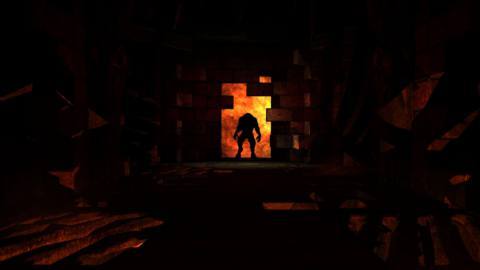
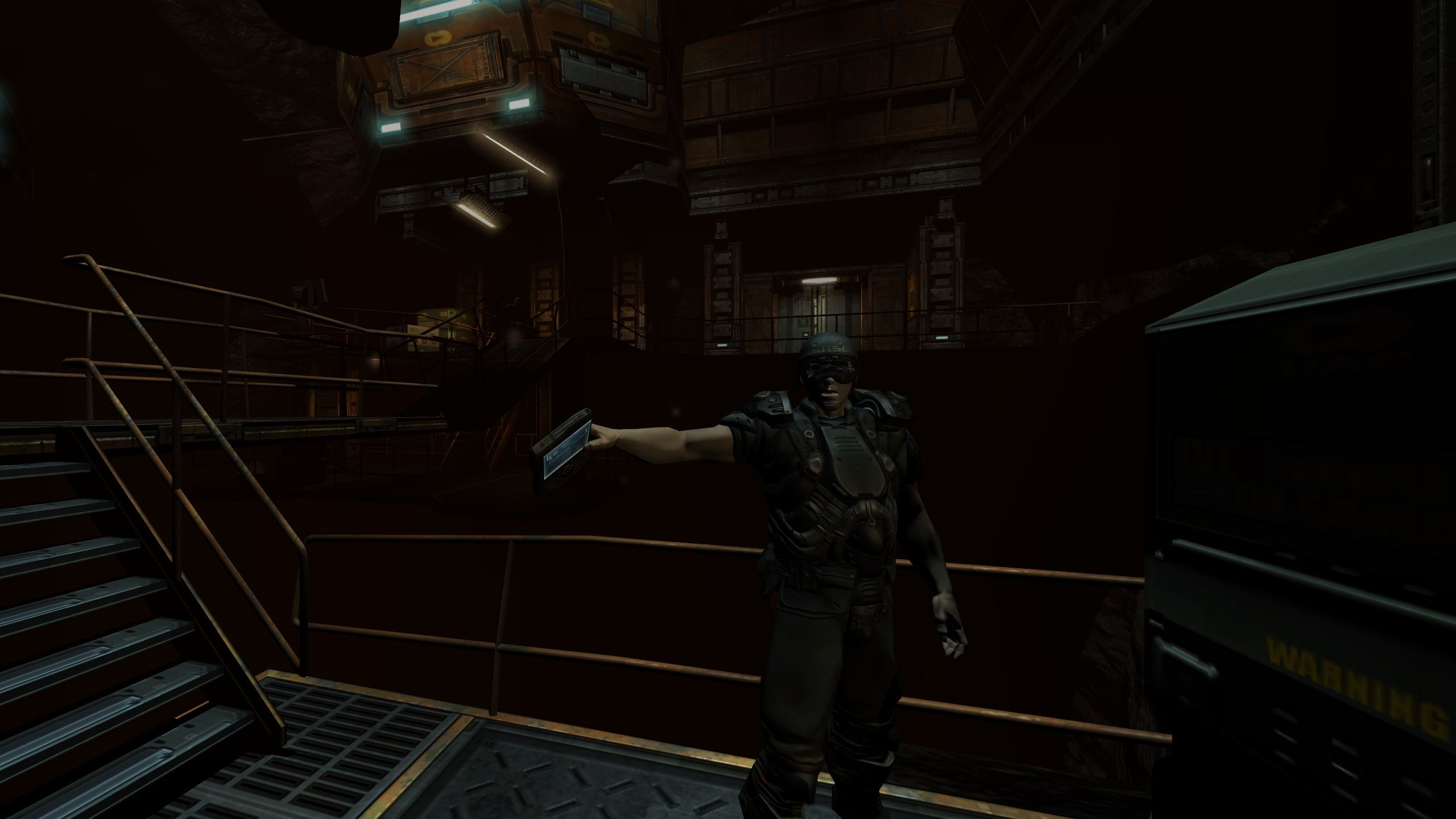
Doom 3’s claustrophobic environments and slower, up-close combat make it a shockingly good fit for VR, flashlight in one hand, shotgun in the other. Weirdly, the only official way to experience this is via the PlayStation VR port, but the community have stepped up to offer several options, including Doom3Quest for standalone Oculus/Meta headsets, and Doom 3: Fully Possessed for the SteamVR crowd.
There are parts that people remember very fondly of Doom 3, like its depiction of hell for the few levels you spend there. After traversing a thousand shiny brushed-steel corridors and labs, the shifting walls, ornate brickwork and uneven volcanic rock of the underworld feels especially menacing. Especially as the hell levels liked to throw one especially memorable enemy at you that hasn’t returned since; demonic cherub. Part chubby angel-child, part horrible clawed insect, and one of the more unsettling things you have to shoot.
Less popular is the repetitive encounter design, often spawning two enemies in front of the player and one directly behind for a cheap gotcha shot in the back of the head. Frustrating, but understandable given the limitations of narrow corridors. Less excusable are the few sections where you need to navigate on Mars’ surface, and Doomguy appears to have forgotten a helmet. Plus, he’s been smoking a pack a day since he was seven years old, because his total lung capacity is barely 30 seconds. As a thoroughly non-athletic person, I can still do several times better.
So, a mixed bag, but an enjoyable one. But in my opinion, the one thing that held back Doom 3 the most from enduring success is that its mod scene never took off the way it could have. A source code release in 2011 and a remaster in 2012 gave the game a brief second wind, but to this day, only a dedicated handful of fans continue to work on the game. Let’s take a brief look at what the fans have been doing to keep the game alive and kicking into the 2020s, and the best way to enjoy the game if you’ve missed out on it up until now.
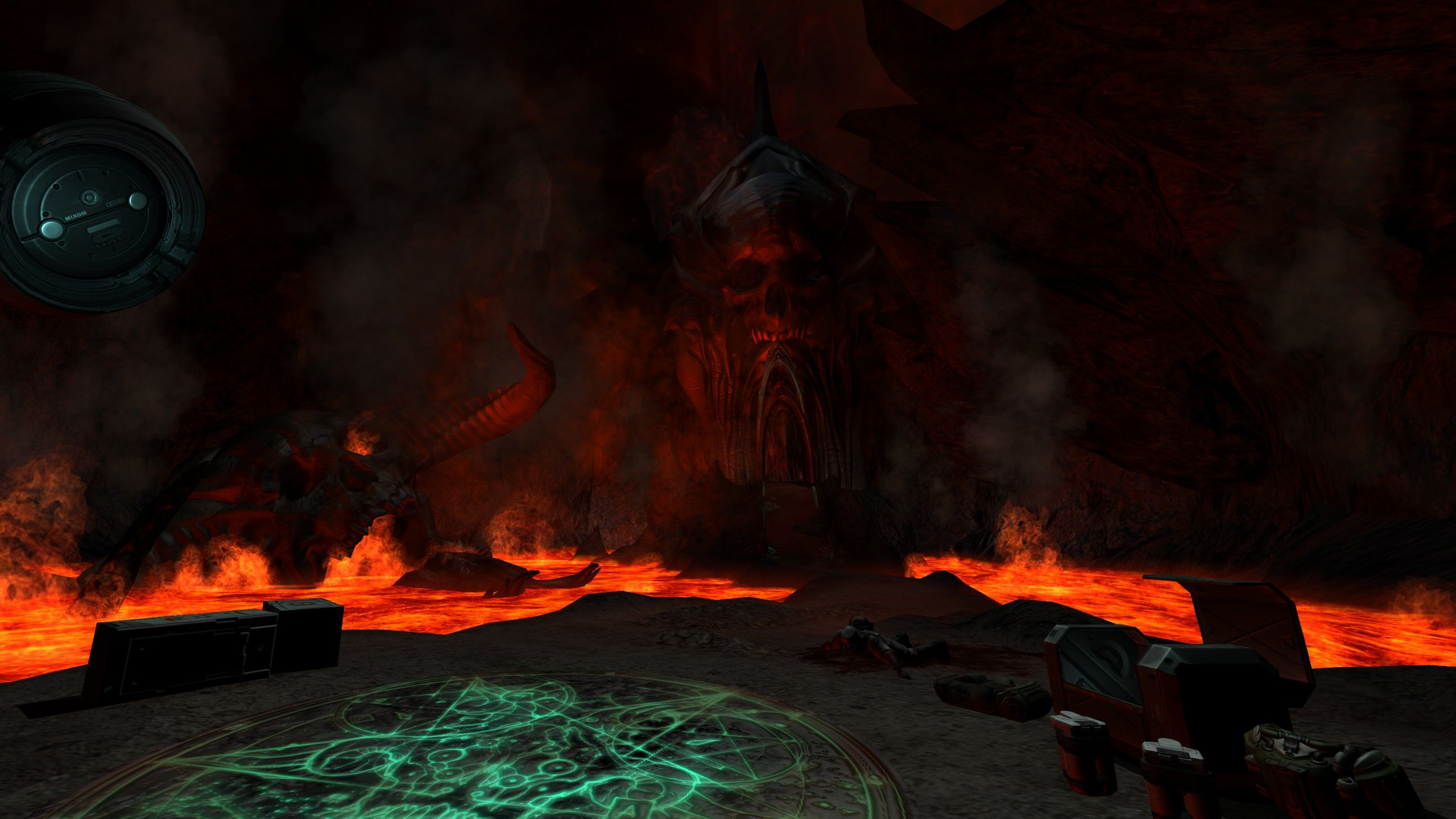
The Ultimate Doom 3
If you’re under the age of 30, there’s a solid chance you’ve not played Doom 3 for yourself, just read about it and watched videos on YouTube. The good news is that if you want to, it’s simply a matter of grabbing the game on Steam (where it is frequently available at a steep discount), scoring you both the original 2004 version of the game and its expansion, plus the remastered ‘BFG Edition’ from 2012.
Unfortunately, neither of these is the best way to experience it.
If you just want a quick peek at the game, then the BFG Edition is a passable way to experience it, but the remaster makes a number of odd changes that fans of the original have found divisive, and I’m broadly in agreement. Among them, the overall brightness of the game has been boosted, the flashlight is replaced with a shoulder-mounted torch that you can use at the same time as guns (blunting the intensity of some pitch-black sections) and ammo and health pickups are more generous. That last one is especially odd as Doom 3 was never especially tough to begin with.
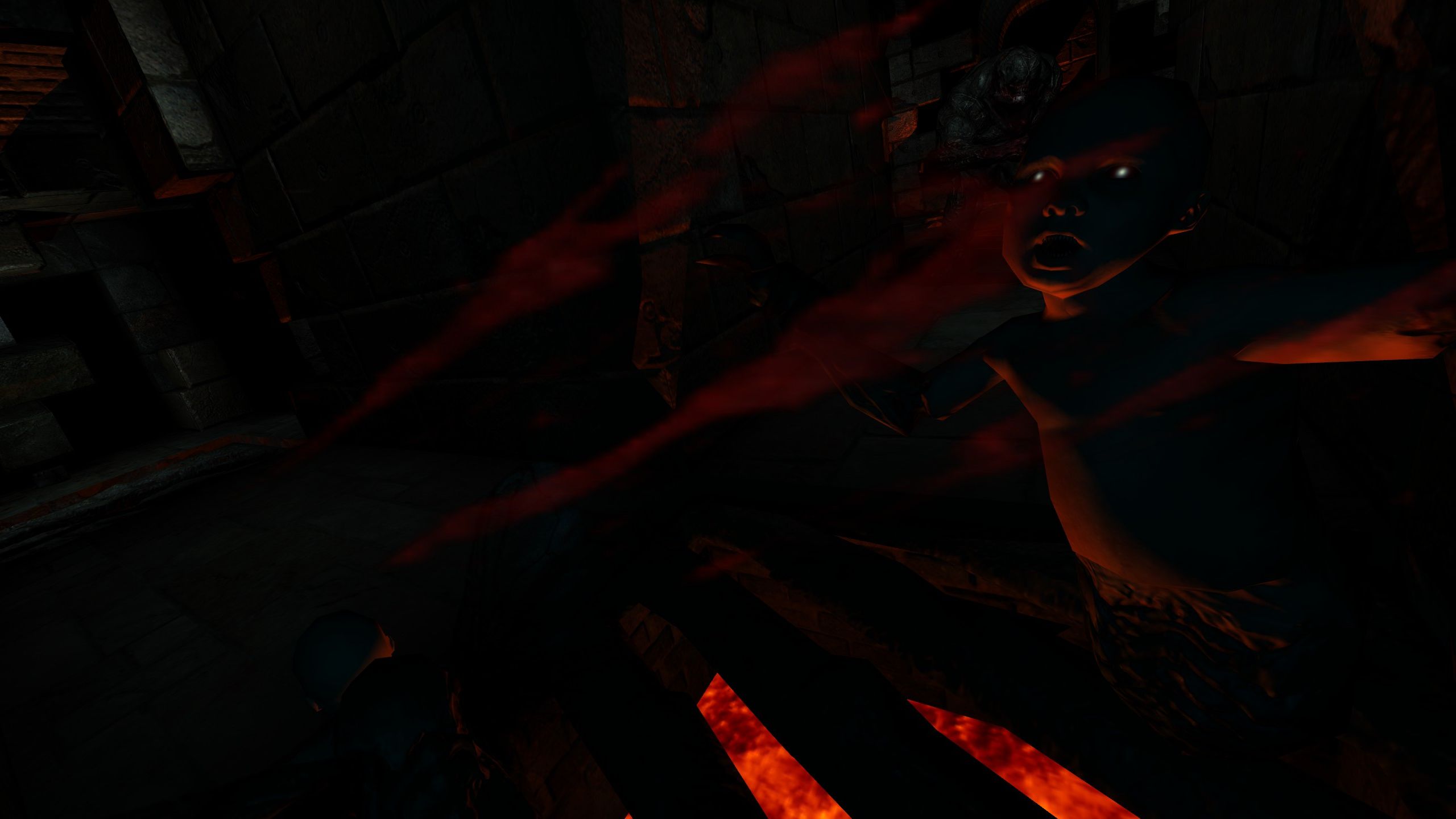
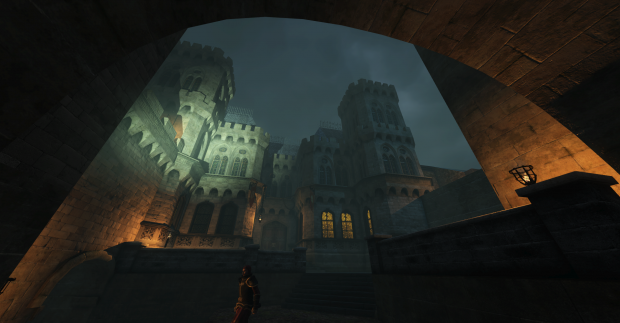
Doom 3’s stark shadows make for great horror vibes, but a team of modders saw their potential as the foundation for something sneakier. The Dark Mod was originally a Doom 3 mod heavily inspired by Looking Glass’s classic Thief games. WIth the engine now open-source, nothing was stopping it from growing into a free and fully standalone platform for larcenous adventures. Its community is preparing to celebrate their 15th year of thievery this October with a big level design contest.
The easiest way to dodge these alterations is to go back to the source. If you’re willing to spend five minutes of tinkering to get the best possible experience, you’ll want dhewm3, a source port that makes the original, unaltered game play nicer with modern hardware and aspect ratios. Compared to its cousins GZDoom and VKQuake it’s a bit bare-bones, but irons out most of the issues inherent in the original release.
The only real down-side of dhwem3 is that its mod support is limited. The port’s official page lists a handful of supported projects (including the popular graphical overhaul Sikkmod, which doubles down on the hazy, color-graded aesthetics of the PS360 era), but many of the bigger projects out there require a fresh vanilla install and the occasional console command or bit of config-file tweaking. ModDB has a growing number of projects porting themselves to dhewm3, but it seems unlikely to move the needle much.
Probably the best reason to go wandering outside the cozy confines of the BFG Edition or dhewm3 is Doom 3: Phobos, probably the most expansive community-made campaign to date. In the works since the source code release over a decade ago, and developed by the ambitious Team Future, Phobos is a faster, more aggressive take on Doom 3 without losing that spark that defines the game. It still looks, sounds and feels like Doom 3, but plays weirdly closer to the original Half-Life, rapid-firing pistol and all. While there’s plenty of traditionally Doom-ish corridor crawling, there’s a good number of big industrial sites to explore, all beautifully lit and intricately detailed. Phobos’ offices in particular feel especially lived-in.
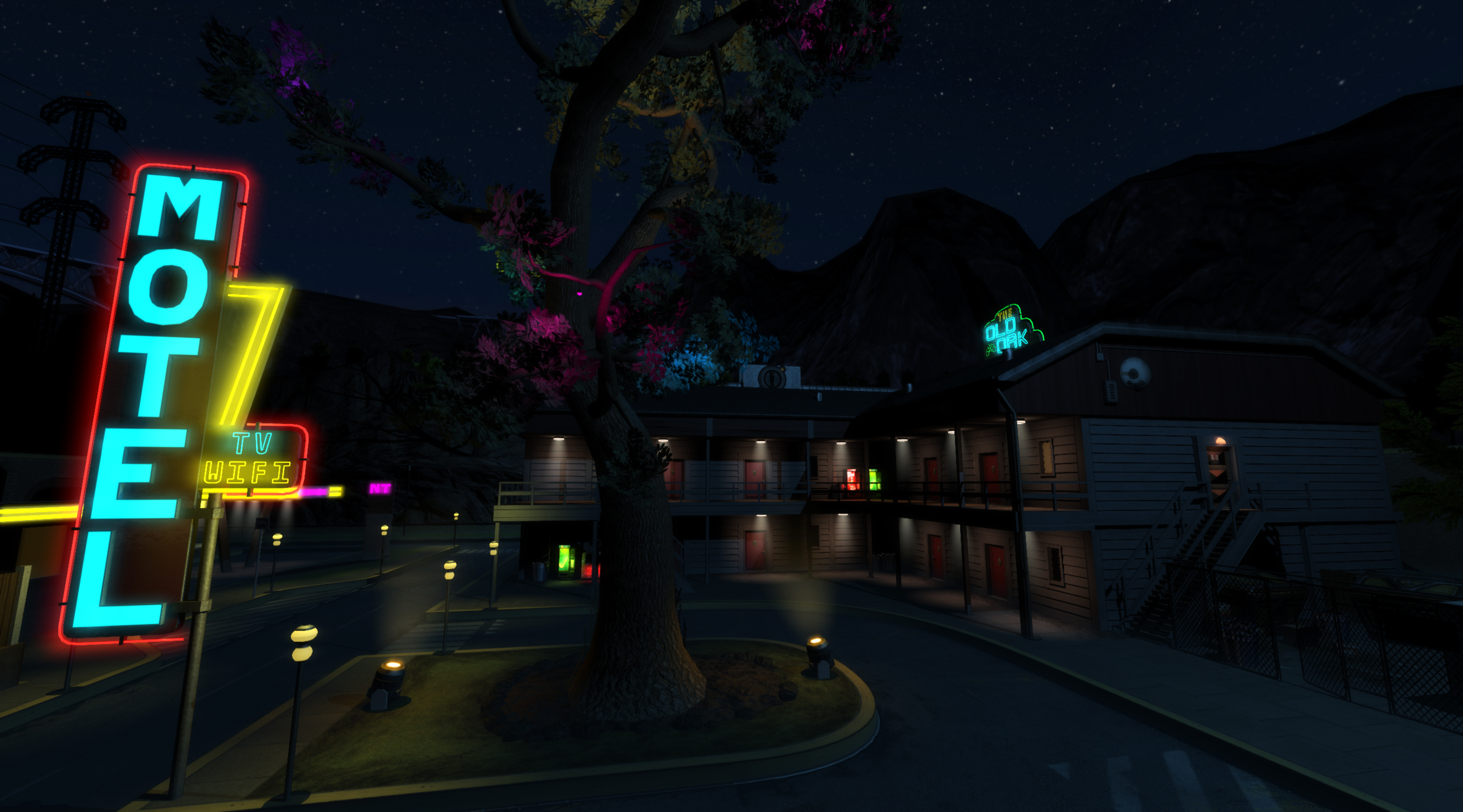
Phobos also leans more heavily into storytelling than the original, putting players in the chunky space-boots of an amnesiac protagonist with a voice and a backstory explored through (professionally voiced) dialogue and some lengthy flashback sequences set back on Earth. It’s a genuinely impressive production, a solid shooter in its own right, and still feels like Doom 3, even if Phobos’ shotgun is several times more effective. It’s also still growing, with its third (and largest) episode released just this May.
Sadly, there’s not much else to be said for Doom 3’s modding scene. While a little more active than Rage’s dusty ghost-town of a community, Doom 3 has never experienced the popularity of its direct predecessors. Perhaps it’s just a matter of time until a Quake-style community renaissance comes to the dark, high-tech corridors of Mars, but I’d not hold your breath. Not given Doom3guy’s embarrassing lung capacity.

